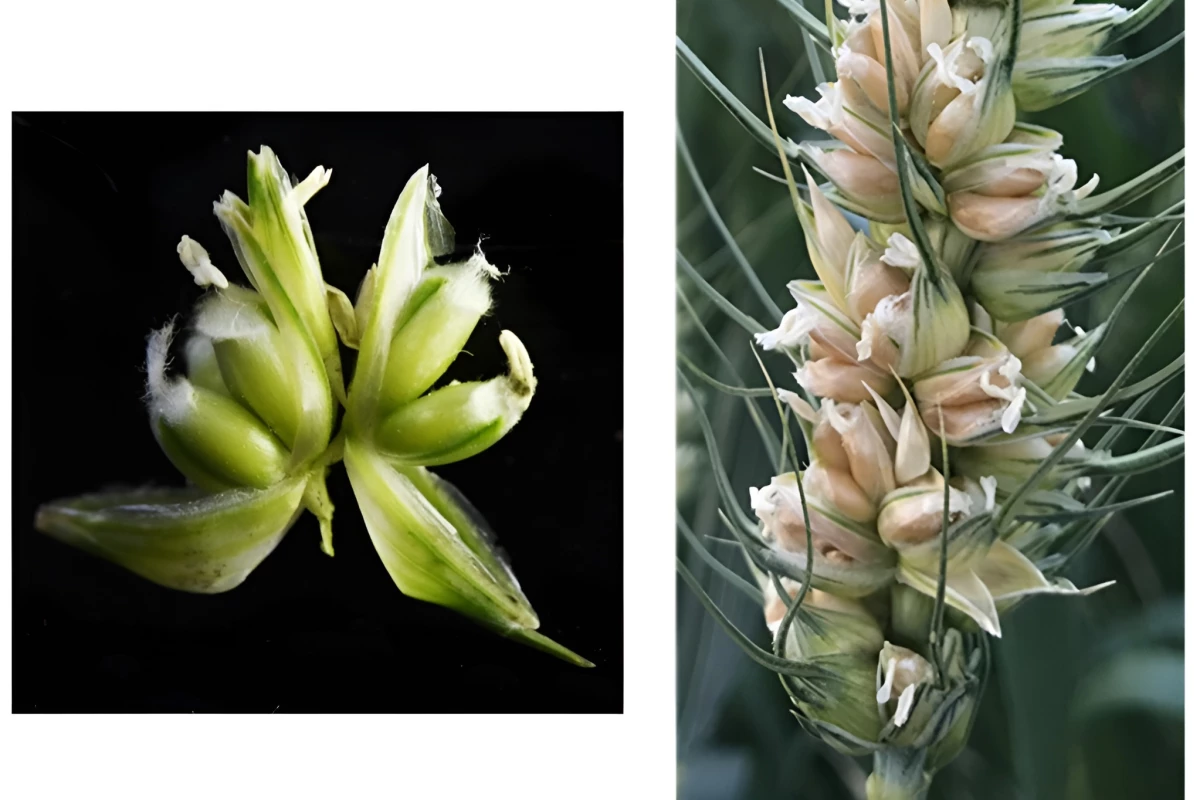Science
Genetic Breakthrough in Wheat Could Triple Grain Yields

A groundbreaking genetic discovery may soon enable wheat farmers to triple grain yields without needing additional land, water, or fertilizer. Researchers from the University of Maryland have identified the genetic basis of a rare wheat mutation known as MOV (multi-ovary), which allows each floret to produce up to three grains instead of the typical single grain.
Traditionally, each floret in a wheat plant’s seed head develops one ovary, leading to one grain. The MOV mutation, however, enables certain plants to develop multiple ovaries per floret. This characteristic has the potential to significantly increase overall grain production, but the underlying genetic mechanism was not fully understood until recently.
In their study, scientists meticulously mapped the DNA of MOV wheat and compared it to that of standard bread wheat. Their research revealed that a dormant gene, known as WUSCHEL-D1 (WUS-D1), becomes active in MOV wheat. This gene plays a crucial role in enhancing the development of female flower parts, such as pistils and ovaries. By activating WUS-D1 in cultivated wheat, researchers believe they can boost grain production.
Pathway to Higher Yields
According to Assoc. Prof. Vijay Tiwari, a co-author of the study, “Pinpointing the genetic basis of this trait offers a path for breeders to incorporate it into new wheat varieties, potentially increasing the number of grains per spike and overall yield.”
The findings, published in the journal Proceedings of the National Academy of Sciences, suggest that employing modern gene editing techniques could further enhance this trait in wheat crops. By focusing on activating the WUS-D1 gene, scientists aim to develop higher-yielding wheat varieties, which could have significant implications for global food security.
With the world facing increasing challenges related to food production, advancements like these could be pivotal. If successful, the application of this genetic discovery may help meet the growing demand for wheat, a staple food for billions.
The research not only highlights the potential for increased agricultural productivity but also underscores the importance of genetic research in addressing food scarcity. As scientists continue to explore the applications of the MOV mutation, the agricultural sector awaits further developments that could reshape wheat cultivation practices.
-

 World1 week ago
World1 week agoMass Production of F-35 Fighter Jet Drives Down Costs
-

 World7 days ago
World7 days agoGlobal Air Forces Ranked by Annual Defense Budgets in 2025
-

 Lifestyle7 days ago
Lifestyle7 days agoDiscover Reese Witherspoon’s Chic Dining Room Style for Under $25
-

 Top Stories7 days ago
Top Stories7 days agoNew ‘Star Trek: Voyager’ Game Demo Released, Players Test Limits
-

 Top Stories1 week ago
Top Stories1 week agoDirecTV to Launch AI-Driven Ads with User Likenesses in 2026
-

 Science1 week ago
Science1 week agoTime Crystals Revolutionize Quantum Computing Potential
-

 World1 week ago
World1 week agoElectrification Challenges Demand Advanced Multiphysics Modeling
-

 Science7 days ago
Science7 days agoWaning Crescent Moon: What to Expect on October 17
-

 Entertainment7 days ago
Entertainment7 days agoFreeport Art Gallery Transforms Waste into Creative Masterpieces
-

 Health7 days ago
Health7 days agoGavin Newsom Critiques Trump’s Health and National Guard Plans
-

 Science1 week ago
Science1 week agoTulsa Students Inspire New Book on Ralph Ellison’s Legacy
-

 Health7 days ago
Health7 days agoResearchers Uncover New Insights into Cancer Mortality Causes









